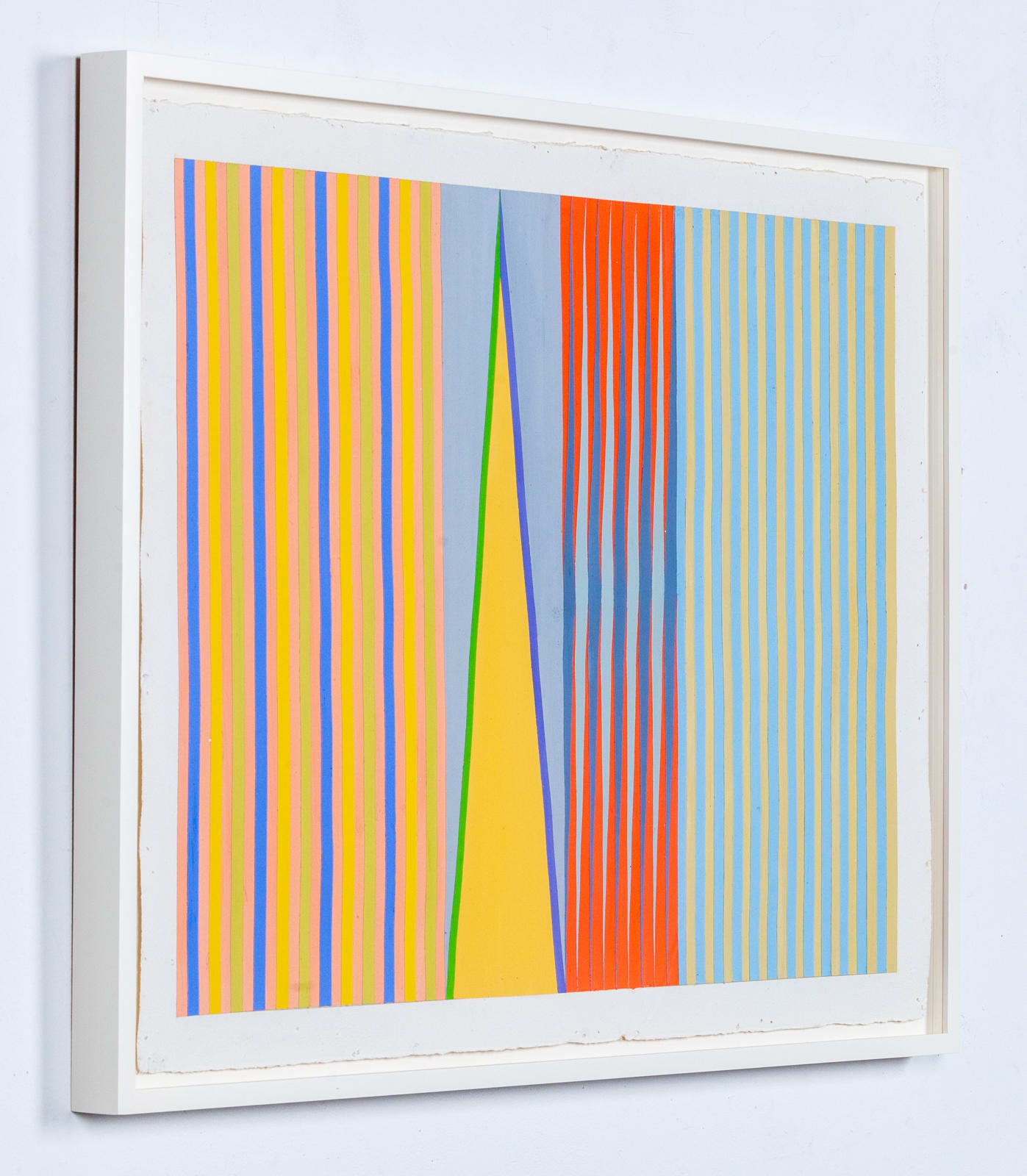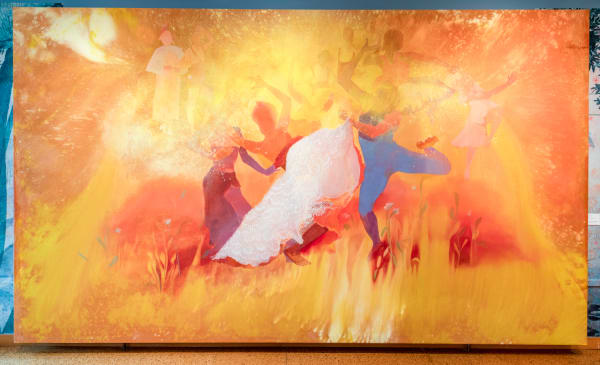James Little USA, b. 1952
(Study for) If only, 2010
Raw pigment on paper
22 x 30 in
55.9 x 76.2 cm
55.9 x 76.2 cm
8096
Further images
This painting by James Little (b. 1952) is a definitive representation of the artist’s distinctive abstract aesthetic language, which is rooted in geometric shapes and patterns, flat surfaces, and emotive...
This painting by James Little (b. 1952) is a definitive representation of the artist’s distinctive abstract aesthetic language, which is rooted in geometric shapes and patterns, flat surfaces, and emotive color relationships. While developing his unique position within contemporary abstraction, Little has devoted decades to rigorous academic study of color theory, pictorial design, and painting techniques. His practice embodies the complementary forces of simplicity and complexity.
“I’m not cutting edge,” he says. “I’m just trying to stand up next to the great paintings of the past. It’s like building a building. The things that are going to make it stand are the same as they’ve always been. You have to have a solid foundation. I approach painting the same way.”
Most painters paint with wet mediums that are made by mixing a dry pigment (think ground umber) with a wet binder (such as linseed oil). The pigment carries the color, while the binder suspends that color in a form that can be transferred onto a surface using a brush or other painting implement. There are some painters, however, who skip the binder and paint directly with the dry pigment. You can simply apply the dry pigment to a surface then coat it with some kind of clear sealer.
Raw pigment gives the painter more control over aesthetic issues. Raw pigments create a much more translucent layer than wet paint, which can be helpful for painters experimenting with underpainting effects and painters who are looking for different ways for their colors to react with light, and with each other. Raw pigments also create a texture that is much more earthy and organic looking than the smooth surface created by wet paint.
As a painter who wants as much control as possible over his materials and paintings, James Little is famous for hand making his own mediums. One way he achieves this is to paint with dry pigments; another way is to manufacture his own encaustics, by suspending his pigments in a melted wax binder.
“I’m not cutting edge,” he says. “I’m just trying to stand up next to the great paintings of the past. It’s like building a building. The things that are going to make it stand are the same as they’ve always been. You have to have a solid foundation. I approach painting the same way.”
Most painters paint with wet mediums that are made by mixing a dry pigment (think ground umber) with a wet binder (such as linseed oil). The pigment carries the color, while the binder suspends that color in a form that can be transferred onto a surface using a brush or other painting implement. There are some painters, however, who skip the binder and paint directly with the dry pigment. You can simply apply the dry pigment to a surface then coat it with some kind of clear sealer.
Raw pigment gives the painter more control over aesthetic issues. Raw pigments create a much more translucent layer than wet paint, which can be helpful for painters experimenting with underpainting effects and painters who are looking for different ways for their colors to react with light, and with each other. Raw pigments also create a texture that is much more earthy and organic looking than the smooth surface created by wet paint.
As a painter who wants as much control as possible over his materials and paintings, James Little is famous for hand making his own mediums. One way he achieves this is to paint with dry pigments; another way is to manufacture his own encaustics, by suspending his pigments in a melted wax binder.
Share
- X
- Tumblr










